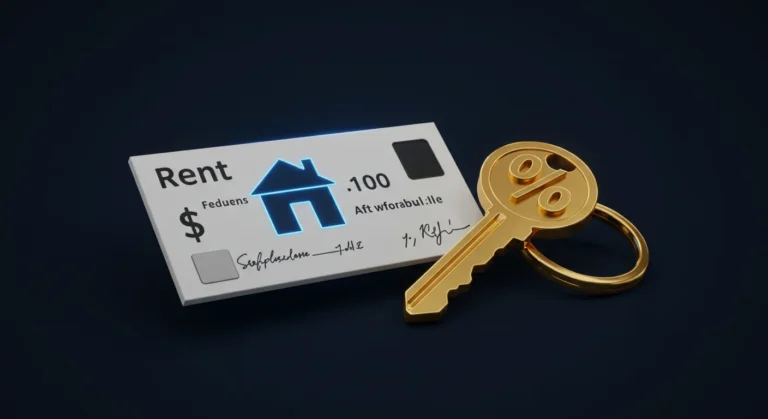How much income do I need for my rent? It’s a question I’ve heard countless times, as many renters find themselves grappling with the complexities of housing affordability and budget constraints. Whether you’re moving out for the first time or seeking a new place to call home, understanding how much of your income should be allocated for rent is a critical financial consideration. In today’s housing market, where rents seem to spiral upward, answering this question isn’t just about numbers—it’s about ensuring you can comfortably afford the lifestyle you envision.
You might be wondering why this topic is so pivotal. Rents often consume a significant portion of our monthly expenses, and misjudging your financial threshold could lead to stress and strain. The traditional guideline suggests that you shouldn’t spend more than 30% of your gross income on rent, but these rules can fluctuate based on geographic location, personal circumstances, and market dynamics. Let’s dive deep into what this means, how you can calculate your needs, and explore the broader implications on your financial health.
In this comprehensive piece, we’ll explore practical methods to determine how much income you really need to pay rent comfortably, without sacrificing other essential life expenses. We’ll look at different approaches, consider various facets of personal finance, and ultimately empower you to make informed decisions about your housing situation. Ready? Let’s unpack this essential topic together.
Join me as we navigate the landscape of rental income requirements, offering insights that cater to your unique situation!
Understanding the 30% Rule
The 30% rule has been a staple guideline for renters for decades. It suggests that you should aim to keep your housing costs, including rent, utilities, and associated fees, at or below 30% of your gross monthly income.
What Gross Income Means
Gross income refers to your total earnings before taxes and deductions. This figure generally includes salary, bonuses, and any additional income streams you may have. Understanding your gross income is crucial as it serves as the baseline for calculating affordable rent. For instance, if your gross monthly income is $4,000, following the 30% rule would mean you could ideally afford $1,200 in rent.
The Variability of the Rule
While the 30% guideline is helpful, it’s not a one-size-fits-all solution. If you live in a high-cost city—think New York or San Francisco—you may find that 30% doesn’t cut it. Instead, you might have to adjust your expectations and consider spending closer to 40% or even 50% of your income on rent. In contrast, areas with lower living costs may allow you to keep your rental expenses more manageable.
Local Market Conditions and Their Impact
Your geographic location plays a significant role in determining how much income you’ll need for rent. Real estate markets fluctuate based on demand, economic conditions, and even local policies.
Rental Market Trends
Staying informed about current rental market trends in your area can give you critical insight into what you should budget. Websites like Zillow and Redfin provide up-to-date listings that can inform you of average rents in different neighborhoods, helping align your income with your housing options.
Finding Your Ideal Area
Do you value being close to work or your favorite coffee shop? Maybe you’re looking for a vibrant community with a thriving nightlife. Consider this: if you prioritize location, you may need to adjust your income expectations and cut back on expenses elsewhere—think flexible budgeting or even additional income sources! The key is to find the right balance between where you want to live and what you can afford.
Calculating Your Personal Rent Limit
While the 30% rule is a good starting point, you should conduct a personalized calculation considering your unique financial situation.
Crafting a Comprehensive Budget
A comprehensive budget not only helps determine your rent threshold but also frames your total financial picture. First, list all your monthly expenses, including utilities, groceries, and entertainment, alongside savings and debt repayments. Once you establish your non-negotiable expenses, deduct them from your income to see how much you can realistically allocate toward rent.
Emergency Funds and Future Planning
Don’t forget to factor in an emergency fund! It’s wise to think about future financial stability. After all, sudden costs can arise—everything from medical expenses to car repairs could throw your budget into disarray. Having that buffer can mean the difference between financial security and crisis. You shouldn’t allocate all your disposable income to rent but create a scenario where you are prepared for anything.
Additional Income and Rental Affordability
If you find yourself struggling to meet rent expenses, you might want to consider various avenues for additional income. This can alleviate some of the financial strain without having to lower your lifestyle standards.
Side Hustles and Part-Time Work
In today’s gig economy, countless opportunities allow you to earn extra cash. Whether it’s dog-walking, freelancing, or selling handmade crafts online, side hustles provide a great way to supplement your income and cover rental costs more easily. Just be sure that any side job you undertake doesn’t conflict with your primary job. Balance is key!
Roommates as a Viable Solution
Roommates can significantly lessen the burden of rent. Sharing your living space reduces your total rental costs, enabling you to live in a more desirable area or afford a larger space. Be sure to pick compatible roommates to ensure a harmonious living situation. For instance, my friend Alex found a great two-bedroom apartment downtown, and by sharing it with a roommate, both of them enjoy a vibrant lifestyle without breaking the bank.
The Emotional Perspective on Rent and Stability
Let’s address the often-overlooked emotional aspect of rent. Housing stability affects our overall well-being and mental health. It’s essential to choose a living situation that not only fits your budget but also feels like home.
Finding Your Comfortable Space
Comfort in living isn’t determined by price alone. An affordable rent that feels too restrictive or a high rent in a less desirable neighborhood can contribute to stress and dissatisfaction. Even if you’re following the 30% guideline, if your home environment doesn’t provide a sense of safety and belonging, it won’t contribute positively to your life.
Creating a Home
Having a cozy, inviting space contributes to positive mental health. Invest time in personalizing your space, making it your sanctuary—even if that means stretching your budget slightly for a place that feels right. Remember, you’re not just paying for roof space; you’re paying for a lifestyle.

Useful links
Conclusion
Deciding how much income you need for rent isn’t just about numbers; it’s about understanding your lifestyle and the area where you wish to live. You might feel anxious about the monthly costs, but knowing your budget can bring a sense of empowerment. By calculating your ideal rent-to-income ratio, you’re taking a crucial step towards financial stability. Plus, it can lead to a happier living situation, where you’re not stressed about making ends meet.
Moreover, remember that local rental markets can differ significantly. What’s acceptable in one city might be a stretch in another. Engaging with your community and exploring various neighborhoods will not only inform you about rent prices but also give you a broader sense of what fits your life best. Home isn’t just a place; it’s where you thrive, so finding a spot that aligns with your financial comfort zone is essential.
Ultimately, you have the power to shape your living experience. Taking the time to assess your income against your rent ensures you’re not living in constant worry. Instead, imagine enjoying your new surroundings, hosting friends, and truly making that space your own. Renting is more than a financial transaction; it’s your foundation for a balanced life.
Frequently Asked Questions
What percentage of my income should go toward rent?
A widely accepted guideline suggests dedicating no more than 30% of your gross monthly income to rent. This benchmark helps to ensure that you have enough left over for other essential expenses like groceries, transportation, and savings. However, depending on your personal financial situation and local cost of living, you might find that a higher or lower percentage works better for you. For example, if you live in a high-demand city, you might pay closer to 40%, but that could mean tightening your budget elsewhere.
How do I calculate my ideal rent budget?
To calculate your ideal rent budget, start with your gross monthly income—this is your income before taxes. Multiply that number by 0.30 to find 30% of your income. This amount serves as a guideline for how much you can reasonably spend on rent. For instance, if you earn $3,000 per month, your budget for rent should ideally be around $900. Adjust this figure if you have other financial priorities, such as student loans or savings goals.
Can I afford rent if I have other monthly expenses?
Absolutely! It’s crucial to take a holistic view of your finances. Aside from rent, consider expenses like utilities, transportation, groceries, and any debt repayments you have. Creating a detailed budget can help you see how much you can realistically allocate to rent without sacrificing your financial well-being. For example, if your monthly expenses total $1,500, subtract that from your monthly income to determine how much you have left for rent and other discretionary spending.
Is it better to rent alone or share a place?
This largely depends on your personal preferences and financial situation. Sharing a rental can significantly lower your monthly costs, making it easier to comfortably afford a better location or larger space. Plus, living with others often comes with built-in social opportunities. On the other hand, living alone gives you privacy and control over your living space, which can contribute to your mental well-being. Weighing these factors can help you arrive at a decision that aligns with your lifestyle and financial goals.
How can I save money for a rental deposit?
Saving for a rental deposit doesn’t have to feel insurmountable. Start by creating a dedicated savings account specifically for your moving expenses. Set a monthly savings goal that fits your budget, and consider cutting back on non-essential spending. Small adjustments, like making coffee at home instead of buying it, can add up over time. Additionally, look for opportunities to earn extra income through side gigs or freelance work. These efforts can quickly build up your deposit fund and put you closer to your ideal rental situation.
Should I consider my credit score when renting?
Yes, your credit score is often a key factor that landlords consider. A good credit score can enhance your chances of qualifying for a rental and may allow you to secure better terms, such as lower deposits or even a lower monthly rent. If your credit score isn’t where you’d like it to be, take some time to improve it before applying for rentals. Paying off debts, making payments on time, and avoiding new credit inquiries can all help boost your score and strengthen your rental applications.
What additional costs should I expect besides rent?
Beyond the rent itself, you should prepare for additional costs that can include utilities such as water, gas, and electricity, as well as internet and possibly cable. Don’t forget tenants’ insurance, which protects your belongings and is often a requirement. Also, consider maintenance or repair costs if you’re renting with less inclusive leases. Plus, if you have a pet, pet deposits or additional fees may apply. Planning for these extra expenses ensures that you can comfortably handle your budget without any surprises down the line.


